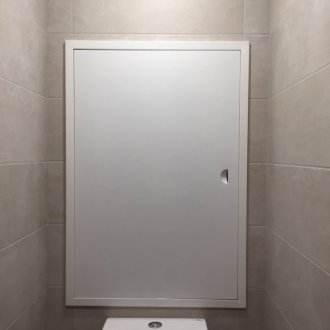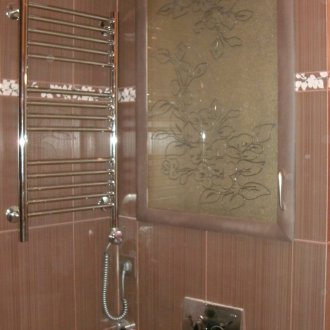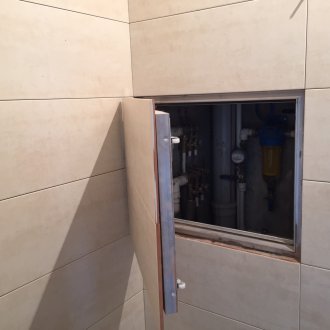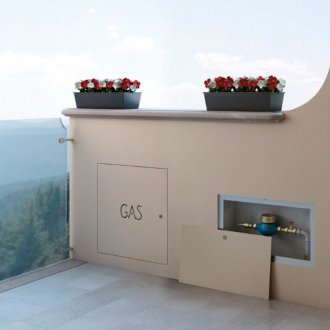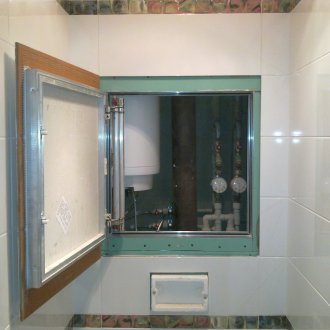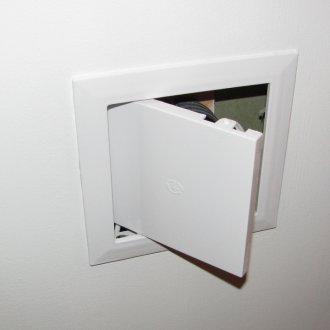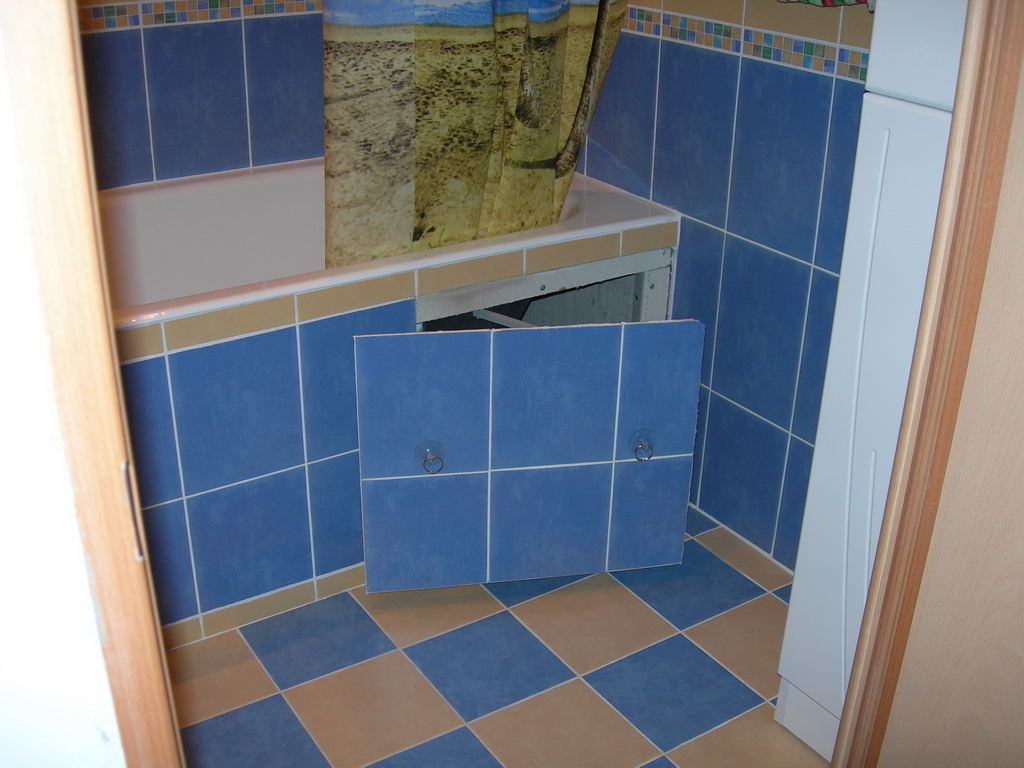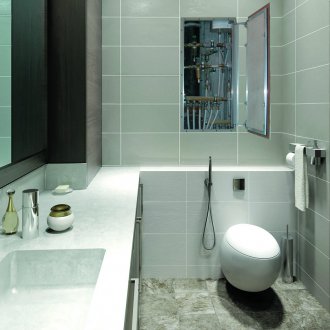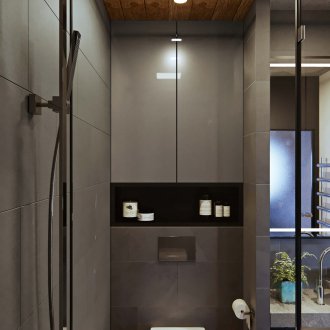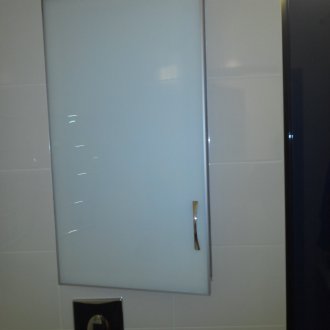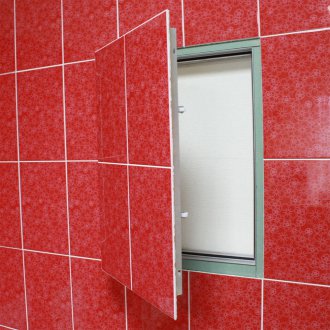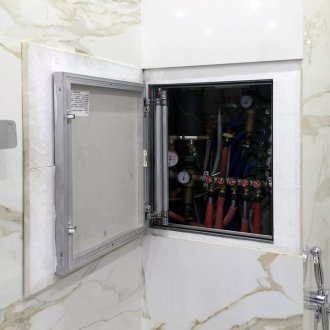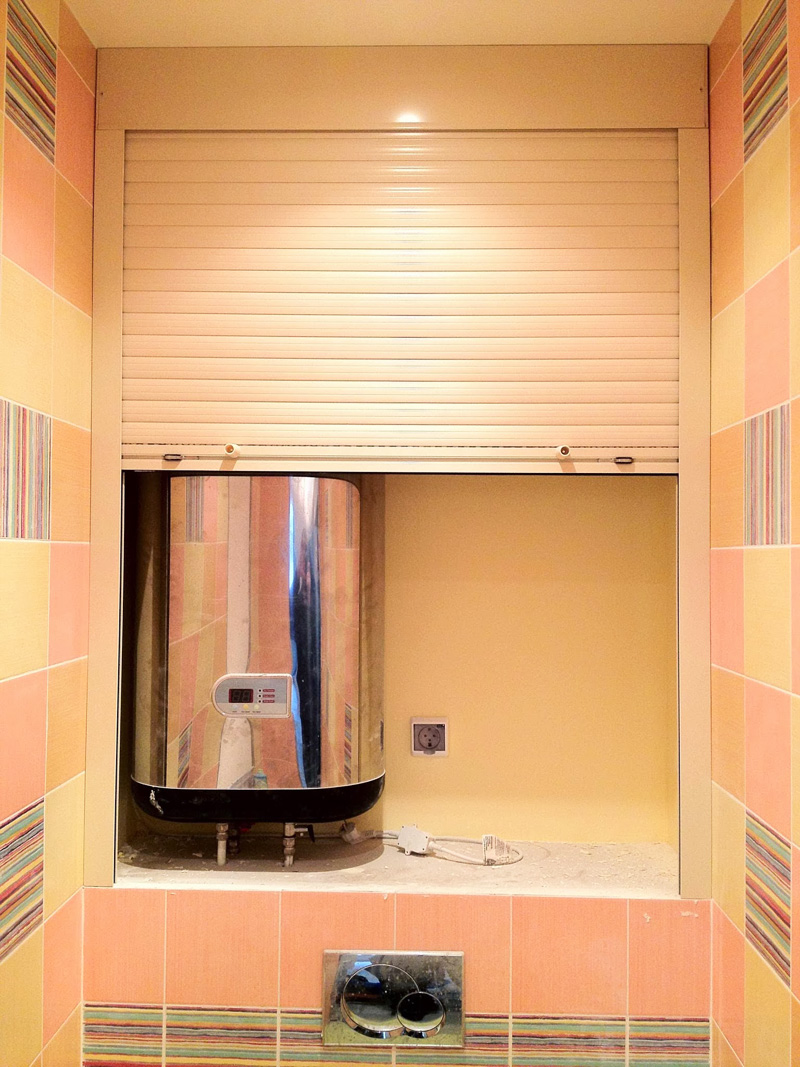Plumbing hatches: how to successfully hide communications (20 photos)
Content
More recently, communications in the toilet and bathroom were in sight and it was absolutely normal, but time does not stand still. And now, the presence of wires, meters and pipes is easy to hide behind decorative panels, which, when maintained, provide easy access to them. For such intentions they also adapt special mechanisms - plumbing hatches.
In accordance with the purpose of the room, its parameters and type of decoration, the dimensions of the hatch for the bathroom and kitchen are calculated. A correctly selected revision hatch will become completely invisible or will be a beautiful decorative interior decoration.
Kinds
Plumbing hatches for the bathroom and toilet are a frame with a door attached by hinges. The main material may be plastic, metal, drywall, fasteners are made of durable metal.
Plastic hatches are mostly white. They fit any shade of tile and are considered a neutral element. A plumbing metal hatch differs only in the material of manufacture and at the highest price. They stand almost twice as high as plastic ones.
A cheap option is a drywall hatch. However, its shelf life and operational properties leave much to be desired. If everything comes down to the price category, it is advisable to choose a device made of plastic.
Hatches are classified according to several criteria.
Unlock Methods:
- movable;
- swinging;
- folding;
- push.
Types of directions:
- floor;
- Ceiling
- wall mounted.
Impact on the interior:
- invisible;
- open;
- under a tile or painting.
Features of hatches:
- Tile construction. The invisible hatch is mounted on the wall, the surface is faced with tiles or porcelain stoneware. Valves, pipes and other devices are hidden behind the hatch. Once installed, ceramic tiles are applied to them. A feature of tiled devices is considered strength, and the ability to withstand any facing materials.
- Plumbing hatch for painting. They adapt to the wall or ceiling, are characterized by high lightness. In addition to tiling, walls and a hatch can be smeared with paint or glued to them wallpaper. They come in hinges or with removable flaps. Any “painting” devices are made of aluminum so that it does not rust after coating the decorative material. The best conditions for installation are drywall walls, false ceilings, but if necessary, can be installed in wooden, brick foundations. A characteristic feature is the lack of handles, locking devices. Opening is carried out using a push mechanism, and closing is done with a special lock.
The revision device should be selected based on the location and further planning of the repair.
Features of choice
First you need to decide on the material. It is better to place a steel hatch in places with low humidity. Plastic or aluminum (their sizes are the same) can be installed in any rooms, they will withstand different temperatures and aggressiveness of the environment.
When choosing, you should pay attention to:
- Strength.
- Material.
- Moisture resistance.
- An opportunity to revet with other materials.
- The location of the doors (how to open).
- The size.
- Wear resistance and impact resistance.
The main requirements for stability impose on ceiling, floor structures. Floor hatches must be resistant to external influences, have a durable mechanism and have additional support, sound insulation. Doors of ceiling models should be light, with the provided closing method (so that they do not accidentally open). Such hatches are more often used in commercial premises, garages.
In apartments and houses, wall hatches are used more. It depends on many reasons: simplicity and ease of installation, space saving, the choice in construction stores is very large.
Push structures
The plumbing pressure hatch is made on push-systems, it opens with light pressure on the external panel. Doors are folding, sliding, open on one or two sides.
Thanks to this mechanism, the device is not equipped with handles and is not formed by suction cups. As a result, the door surface is decorated with various materials, including embossed tiles.
The hatch under the tile press has the following features:
- ease of use;
- reliability (excludes involuntary door opening);
- lack of excess elements;
- quick installation;
- complete freedom in decoration.
Such systems open in two steps: after pressing the door moves slightly to the side, after which it becomes noticeable. In the locked position, the cover is easily pushed to the side. Such designs are placed both in the toilet and in the bathrooms. They are installed near the installation with the toilet and are almost invisible.
Swing models
A swinging sanitary hatch to the toilet is a fairly popular design due to the usual opening system. Its mechanism is absolutely simple - the door is connected to the frame with two hinge hinges. They do not swing open spontaneously due to roller-wedge latches.
In the open position, the tiled door is level with the base. A suction cup or a locking handle is attached to the sash.
Advantages of swing hatches are:
- comparative simplicity of performance and installation;
- possibly placed on the wall and floor;
- affordable cost.
Such a plumbing hatch for tiles can be installed independently without causing plumbers.
Hinged devices
Such constructions are well adapted where it is difficult to swing open or slide the door. When pressed on the sash, it opens at an angle of 45 °, securing itself to the chain with carbines. Usually this is enough to check communications or rewrite the readings of the water meter. When it is necessary to allow full access (for repair operations), the carbines are disconnected, and the hatch is completely removed.
Advantages of hinged concealed hatches:
- possibility of application in hard-to-reach places;
- Sashes can be easily removed and allow easy access.
The only drawback is the inconvenience of installing the door, and after each disconnection, it may be necessary to correct its position.
Sliding hatches
Are applied on small spaces where it is impossible to put oar shutters. When pressed, the hatch extends first forward, then to the side. There is a magnetic clamping system of fixation. For opening, special suction cups or a push mechanism are used.
A plumbing hatch with magnets has such advantages:
- to open the sash does not need a lot of space in front of the hatch;
- light weight of the door, so the load on the hinges is minimal.
Cons are:
- more complicated installation;
- the impossibility of fixing on the floor;
- high price.
Suitable for various types of tiles or mosaics. Hatches come in different sizes, can be placed under the bath, for the toilet, for installation.
Plumbing shutters
Widespread use as blinds for hiding communications received roller blinds.They are installed in the bathroom, because they take up very little space.
Roller shutters are specially designed blinds that are wound on a designed shaft. Such a device is very convenient, it reliably hides counters, pipes in the room.
According to the material, you can purchase such blinds:
- plastic;
- aluminum;
- perforated;
- wooden.
The most accessible are the roller shutters made of plastic. They are inexpensive, can withstand high humidity and look beautiful.
Advantages of roller shutter:
- huge selection with different shades and patterns;
- free access to communications;
- durable mechanism;
- long service life;
- high resistance to moisture;
- the ability to place in any bathroom, toilet;
- just lend themselves to coloring, decoration.
Disadvantages:
- plastic structures quickly collect dust;
- come across when buying designs of poor quality.
Plumbing shutters are mainly located above the toilet, some of them are even able to hide the installation. They will hide all unaesthetic communications, leaving free access for replacement and repair.
Convenient living in the house depends on the correct choice of a sanitary overhead hatch and its size. By installing a suitable device, it can be easily inspected or repaired if necessary. Communications should be accessible, but not spoil the external picture of the room.
